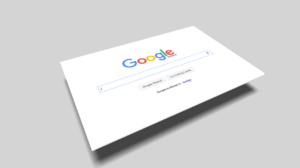In my early days as a marketer, I used to dream about having an unlimited budget to implement all my ideas. OK, let me be honest: I still do that sometimes. I do it for my own digital marketing agency, Idunn, as well as for clients whose businesses I truly believe in.
But unlimited budgets are just that: a dream.
Even the biggest corporations in the world have a limited budget (albeit the limit is quite high).
So I snap out of it and work on coming up with the best strategies within the budget our clients or I have.
And you know what?
It’s actually quite rewarding!
I love looking back on how much we managed to achieve with so little. We work with a lot of bootstrapping startups, so we actually have a knack for making things work on a tight budget.
SEO on a budget is by far one of the most challenging and common issues of small and medium-sized companies. But it doesn’t mean it can’t be done.
5 tips for excellent SEO results on a budget
Let’s take a look on how we can maximize optimization even with budget constraints.
1. Take a close look at your keyword strategy
I wrote a lot about choosing the right keywords here, but let me summarize this for you: try to go for keywords that are both easy to rank for and relevant for your business.
Here’s an example: it’s hard to rank for “hotel in Paris”, but you can rank for “hotel near the Eiffel tower” much easier. This comes with the added bonus of sending you qualified leads aka the people who are most likely to book your hotel.
Granted, you will get less visitors than if you rank for “best hotel in Paris”. But the strategy above won’t cost you an arm and a leg. And, after all, why should you care about the visitors who don’t turn into customers anyway?
2. Make sure all your information is correct
This is vital for local businesses, but also very important for any type of company. Make sure that your address, phone number, email address, contact person and ZIP code are identical on every platform you use, from Yelp to Facebook and your own website.
Make a Google My Business listing for an added bonus. This way, when people near you search for your products or services, Google will return your page as a result.
3. Write for humans
Yes, keywords are important. But not as important as keeping your readers engaged. If you take a look at the 17 factors that impact ranking, you will see that most of them speak about a great user experience.
Bounce rate, source of traffic, time spent on page and many others indicate that an unnatural writing style will chase off your visitors.
This not 2010. Google bots now understand user intent. And, thanks to innovations like Alexa and Siri, search has become more conversational.
A user is more likely to search “how do I make a chocolate cake from scratch” than “chocolate cake” today. That’s because they also know that the latter search may send them to a bakery shop. If users get specific, you have no reason not to.
4. Outsource SEO tasks
I know what you’re thinking: outsourcing means paying. And we’re on a tight budget, remember?
Of course I do!
But the kind of writing that gets you on the good side of search engines isn’t embodied by 500-word blog posts anymore. You need to go long form and in-depth. This means tons of research and a lot of time spent putting together memorable and informative pieces of 1500+ words.
And time is money. If you get this done in house, you are still paying an employee for it.
Most of the copywriting clients we work with say the same thing: it’s much cheaper to outsource to a reliable agency than to pay a full-time employee for it. Plus, it’s more easily scalable. When your budget runs out, you can pull the plug or limit your investment in content – without firing anyone.
5. Optimize and link everything
It’s quite common to have a superbly optimized blog post and forget about the smaller things. Meta descriptions, alt tags, image tags and more are equally important.
They tell Google bots that your content is relevant for the keyword you chose more clearly than an extra paragraph in your copy.
The same goes for linking. If you’re on a budget and links from other domains are an issue, make sure you do a lot of inbound linking.
It’s perfectly free and incredibly powerful. Whenever you write a new blog post, link to some of your previous ones. Ideally, the anchor text should be the same as the keyword of the article in question.
This is how you signal to search engines that your article is relevant for a certain keyword. The more links to it, the better its ranking.
Conclusion
Great SEO is not something that happens overnight. It’s something that you have to work on continuously. Even if you had an unlimited budget, you’d still have to constantly add new texts and review your links.
The key here is being patient. It may take you a while to see tangible results, but they will come if your work is up to par.
Whatever you do, don’t try black-hat techniques. It may be appealing to hire someone who promises to help you rank on the first position for the most competitive of keywords for a measly $200. But you won’t be ranking high for more than a week! After that, Google will bury your website so deep that you’ll have to buy a new domain in order to get another chance at visibility.





